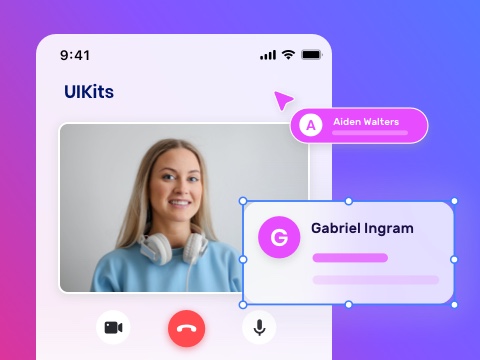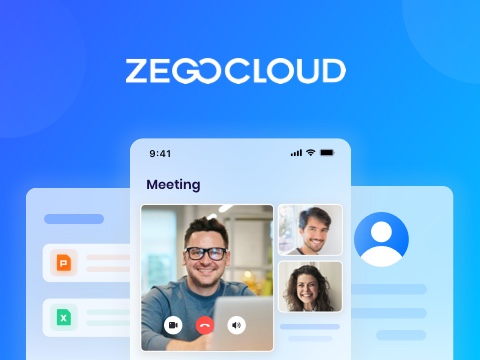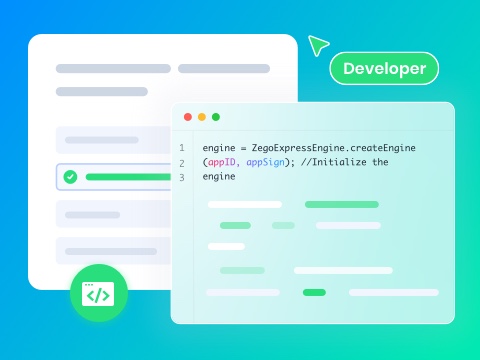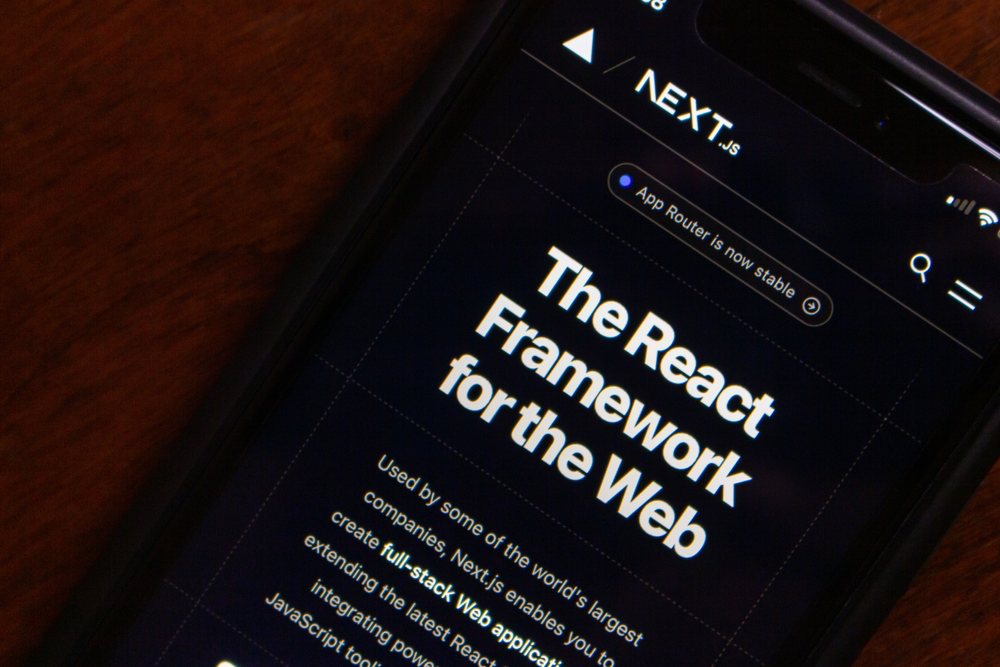Building modern web apps means using efficient tools that streamline development while ensuring performance and scalability. Since React rules front-end development, choosing the right framework can make a huge difference in productivity. Many of these offer added features for optimized performance and effortless integrations. This list explores the best React frameworks available now, helping developers make informed decisions. Hence, understanding these tools ensures developers can maximize efficiency and maintain code quality.
What is React?
It is a powerful JavaScript library that helps developers build dynamic designs with ease. React allows the creation of reusable components to make development faster and more efficient. In place of updating the entire webpage when something changes, this tech updates only the necessary parts. Although developed by Facebook, React has gained this level of fame due to its flexibility and scalability.
Many developers prefer it for building web applications because it simplifies complex UI updates and state management. Additionally, React supports server-side rendering and mobile development through React Native. That makes it a versatile choice for various projects, answering what is React framework and why it is popular. By using a virtual DOM, React ensures smooth updates without affecting performance. This feature makes it the best choice for building modern web applications.
What are UI Frameworks?
UI frameworks provide developers with prefabricated components, styles, and structures to create stunning and functional points of interaction. In place of designing everything from scratch, developers can use these frameworks to speed up development. At the same time, they let them maintain consistency across applications. These frameworks often include elements like buttons, navigation bars, forms, and grids.
Offering a structured approach to UI design, they help developers focus on functionality. Along with that, it also means no waste of time on repetitive tasks. Many of these frameworks integrate well with JavaScript libraries like React to enable the creation of dynamic web apps. Not to mention that the best React frameworks follow optimal practices for responsiveness and performance.
Following these implementation steps ensures apps are visually consistent and functionally sound across diverse devices. For developers aiming to build polished and professional-looking applications, UI frameworks matter a lot. They simplify the process by providing useable design elements to reduce development time and improve overall efficiency.
Why is React Popular?
You might be wondering what makes this specific library so favored among developers. Well, React’s widespread adoption didn’t happen by chance. Many developers choose it because it simplifies development while delivering high performance and flexibility.
A lot of reasons contribute to the popularity of this JavaScript library. Here are some key factors that can convince you to take a React framework tutorial:
- Reusable Components: Developers can create modular components that work across projects to reduce repetition and improve maintainability. This approach speeds up development while keeping code organized.
- Faster Performance: React’s virtual DOM updates only changed elements instead of reloading entire pages. Not only does this function improve speed, but it also makes applications more responsive and efficient.
- Strong Ecosystem: A vast collection of libraries, tools, and community support helps developers extend functionality. In addition, frequent updates and active forums make troubleshooting easier.
strong-ecosystem-react-frameworks
- SEO-Friendly Rendering: With server-side rendering, pages load faster and perform better in search rankings. This robust function makes React ideal for content-heavy or public-facing websites.
- Cross-Platform Development: React Native allows developers to build mobile apps using the same skills. Doing so saves time and effort when creating web and phone applications.
10 Best React Frameworks and Libraries to Check Out
Creating dynamic web interfaces means exploring and choosing the right tools and resources. React offers a wide range of frameworks and libraries that enhance development by adding useful features. Some focus on UI components, while others handle routing or state management.
Choosing the right one depends on project needs, scalability, and ease of integration. Explored below are the top 10 React.js frameworks to aid you in selecting the ideal one:
1. Next.js
When you are in need of speed, efficiency, and scalability, this framework is the one you should go for. This answer to the question, “Is React a framework?” enhances development by offering server-side rendering and static site generation. With native support for routing and API handling, Node.js simplifies the process of creating outstanding applications. Plus, its hybrid rendering capabilities let developers choose between static and dynamic content generation.
Key Features
- Loads only the necessary JavaScript, reducing initial page load times.
- Furthermore, it enables back-end functionality within the same project without external servers.
- Provides automatic image compression and lazy loading for better performance.
2. Remix
Developers looking for an effortless way to handle both front-end and back-end logic often turn to Remix. This full-stack React.js framework focuses on delivering fast and empirical applications with efficient server-side rendering. Plus, its optimizing of data loading and providing intelligent caching enhances performance. Unlike traditional client-heavy applications, Remix minimizes unnecessary JavaScript execution on the browser. Not to mention that its native routing system also simplifies navigation management.
Key Features
- Organizes components and data fetching efficiently within a structured route hierarchy.
- In addition, it fetches data at the right time to avoid unnecessary re-renders and delays.
- Simplifies form submissions with automatic state management and validation.
3. Gatsby
Looking for a fast and secure way to build static websites with minimum effort? Gatsby is the recommendation, along with it being a great answer to “Is React a framework or library?” This framework generates pre-rendered HTML pages, ensuring lightning-fast performance and better SEO. Besides, its use of GraphQL for data fetching effortlessly integrates content from various sources. Furthermore, Gatsby’s plugin ecosystem extends functionality to make adding features easier.
Key Features
- Enables offline access and better user experience via Progressive Web App support.
- Automatic code splitting loads only necessary code for each page, reducing load times.
- Supports static site generation with pe-builds pages for ultra-fast loading speeds and improved SEO.
4. Blitz.js
Full-stack development often involves managing separate front-end and back-end systems. However, Blitz.js simplifies this by offering an effortless and monolithic experience. Built on top of Next.js, it eliminates the need for API management to let developers focus on writing business logic. Besides, its native authentication and database integration make it ideal for creating robust applications quickly. That makes it an excellent contender for the best React framework.
Key Features
- Fetches back-end data directly in React components without REST or GraphQL.
- It provides user authentication with session management and security measures.
- Supports a scalable and efficient database layer for smooth data handling.
5. RedwoodJS
Building full-stack applications with React often requires configuring multiple tools. However, RedwoodJS simplifies the process by offering an opinionated and end-to-end framework. Designed for scalability, it integrates React on the front end and GraphQL for data fetching. With automatic API generation, developers can focus on building features instead of handling back-end setups. Additionally, its structured development approach ensures an easy React framework tutorial for users.
Key Features
- Provides a powerful and scalable ORM for managing relational databases via Prisma.
- It also includes user authentication and role-based access control out of the box.
- Optimized for serverless platforms to ensure ready deployment, enabling effortless scalability.
6. React Router
Managing navigation in a React application requires a reliable routing solution. That’s where React Router is the most preferred choice for most developers. In addition, it enables effortless navigation between views while maintaining a single-page application experience. By supporting both dynamic and nested routing, this React framework allows developers to structure applications efficiently. Not to mention that its ability to handle browser history ensures smooth transitions between pages.
Key Features
- Generates routes based on application state and URL parameters for dynamic routing.
- Organizes components within a structured, hierarchical routing system when it comes to nested routing.
- Deploys route guards to control access to specific routes based on user authentication or permissions.
7. Redux
Providing a centralized state management system, this React.js framework helps manage state in applications. Redux helps apps scale by ensuring predictable data flow and avoiding unnecessary re-renders. Moreover, storing the global state in a single source of truth let it makes debugging and maintaining applications easier. Additionally, its unidirectional data flow ensures that changes happen consistently. When handling server responses, Redux provides a structured and scalable solution.
Key Features
- Stores the entire application state in a centralized and immutable object referred to as the single source of truth.
- Furthermore, it enhances functionality for middleware support with tools like Redux Thunk and Redux Sag.
- Allows components to access shared state without unnecessary prop drilling.
8. Recoil
Handling complex states in React applications becomes easier with Recoil, a lightweight state management library. Unlike traditional solutions, it treats the state as a graph of atoms and selectors. That allows precise updates on the apps without unnecessary re-renders. Since it enables components to subscribe to only the necessary state values, Recoil improves performance and scalability. Not to mention that the React framework tutorial with it makes it easy to adopt.
Key Features
- Stores individual pieces of state separately for atom-based state management for better control.
- Handles async operations like fetching data without additional middleware.
- Updates only affected components instead of triggering unnecessary renders.
9. Material-UI
Creating visually appealing React applications becomes effortless with Material-UI. It is a popular component library based on Google’s Material Design principles. Moreover, it provides a rich set of already styled components that ensure a consistent and modern use interaction. With native theming options, developers can easily customize designs to match brand aesthetics. Plus, its optimized components for responsiveness make it a top choice for the best React framework.
Key Features
- Ensures layouts adapt smoothly across different devices and screen sizes.
- It allows advanced styling techniques using JavaScript-based approaches for CSS integrations.
- Supports light and dark themes with flexible styling options to make the apps appealing.
10. Chakra UI
When you want to build accessible and customizable React interfaces, this library is the way to go. Chakra UI provides a set of composable components with native accessibility features, ensuring an effortless user experience. With an approach centered on themes, this React framework library allows developers to adjust colors and typography easily. Powered by style props, its styling system also eliminates the need for complex CSS configurations.
Key Features
- Enables effortless switching between light and dark themes for dark mode lovers.
- Besides, it adapts components automatically to different screen sizes, becoming responsive by default.
- Adjusts styles easily with scalable design tokens and ensures every UI element follows accessibility best practices.
How ZEGOCLOUD Enhances React Frameworks for Seamless Real-Time Experience
Integrating real-time communication features into React applications can be challenging but not impossible. ZEGOCLOUD simplifies this process with its comprehensive suite of APIs and SDKs. It offers specialized tools for video calls, voice chats, in-app messaging, and live streaming. With that, ZEGOCLOUD enables developers to enhance user interactions effortlessly. Moreover, it provides all the essential business logic and design components required for implementing voice and video calls.
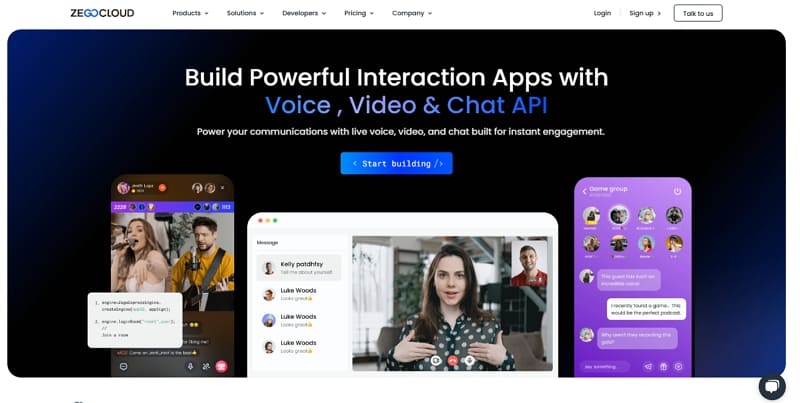
ZEGOCLOUD’s RTC SDK simplifies the integration of real-time voice, video, and chat into React applications, ensuring a smooth, low-latency experience.
Here’s how it enhances React development:
- Scalability & Reliability – Supports applications of all sizes, from small projects to enterprise-grade platforms.
- Seamless Integration – Pre-built UIKits and SDKs allow developers to quickly embed real-time features without complex configurations.
- Ultra-Low Latency – Powered by ZEGOCLOUD’s global real-time network, ensuring uninterrupted, high-quality communication.
Developers can leverage ZEGOCLOUD’s WebRTC-based SDK to enable real-time interactions with minimal effort. Whether you’re building a video conferencing app, customer support chat, or interactive live streaming, ZEGOCLOUD provides the tools to make it happen.
Conclusion
In summary, building modern React applications requires the right frameworks and libraries to ensure actual success. From UI components to state management, each React framework plays a crucial role in development.
When it comes to real-time features like voice, video, and messaging, ZEGOCLOUD offers the best solution. Its powerful APIs integrate smoothly with React, making it the perfect choice for developers who want to enhance user interactions effortlessly.
Read more:
FAQ
Q1: What frameworks use React?
Several frameworks are built on React to enhance its capabilities, including Next.js (for server-side rendering and SEO), Remix (for better data loading and progressive enhancement), and Gatsby (for static site generation). These frameworks extend React’s functionality for different use cases.
Q2: Is React a NodeJS framework?
No, React is not a Node.js framework. React is a JavaScript library for building user interfaces, while Node.js is a runtime environment for executing JavaScript on the server. However, frameworks like Next.js use both React (frontend) and Node.js (backend) to create full-stack applications.
Q3: Which form framework is best for React?
React Hook Form is highly recommended for its performance efficiency and minimal re-renders. Formik is another popular option, offering robust form state management and validation. If you need schema-based validation, pairing Formik with Yup is a great choice.
Q4: Is React just another MVC framework?
No, React is not an MVC framework. It is a component-based UI library that focuses on building interactive interfaces, managing only the “View” layer. Unlike traditional MVC frameworks, React relies on state management tools like Redux or Context API for handling data flow.
Let’s Build APP Together
Start building with real-time video, voice & chat SDK for apps today!


